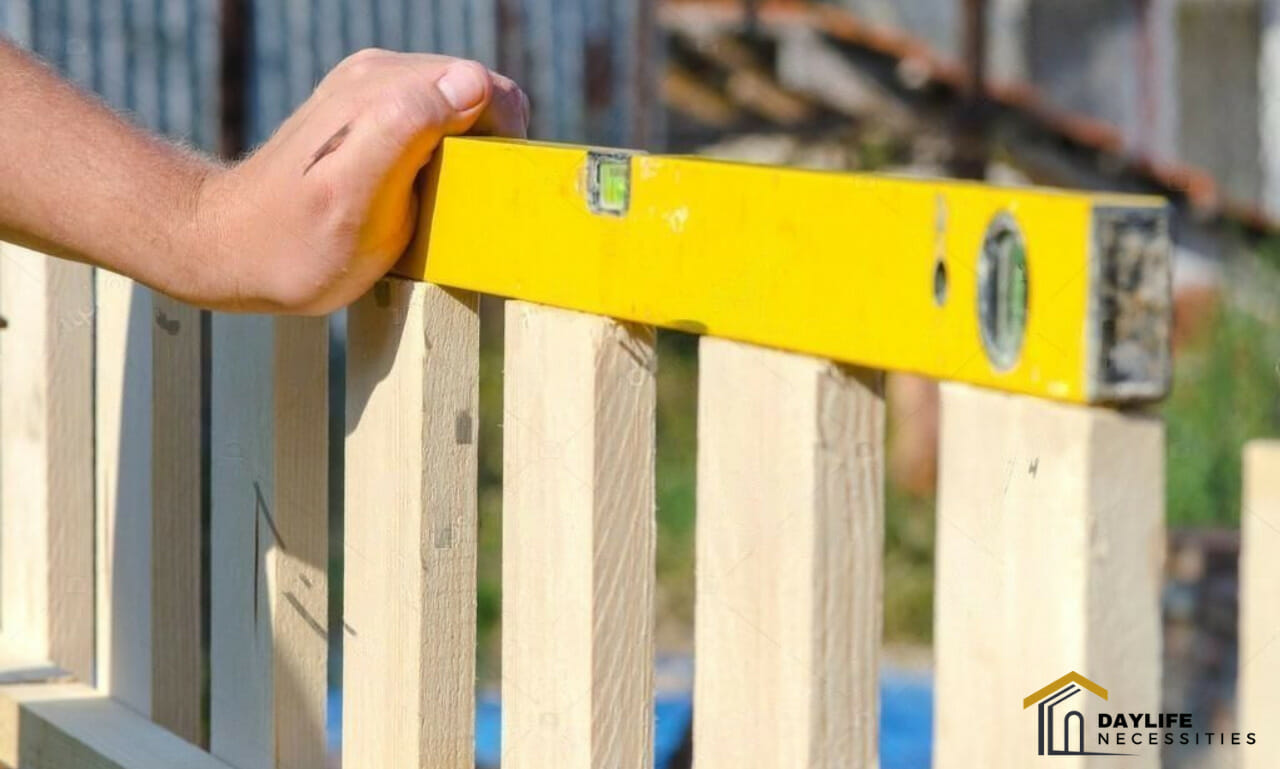A leaning or sagging fence can be an annoyance and a hazard. If your fence has become a liability, it’s time to get it fixed.
Fortunately, fixing a leaning fence is something that anyone with basic DIY skills can do. You don’t need to spend money on contractors; you just need to know how to fix a leaning fence post and neutralize the cause of the leaning problem.
These fixes help keep your pets or intruders from slipping through the opened gate and into your yard. If you’re ready to get started, read on for DIY home repair tips and solutions.
Many Ways to Fixing a Leaning Fence Post–Guide
The post may be repaired in a variety of ways, but some are more permanent than others. Here, I’ll demonstrate how to repair leaning fence post without having to mix concrete.
Restoration can be completed in just a few hours, making it possible to fix our fence.
The post will still be robust after the work is finished, and it won’t have to be blended.
What Causes Fence Posts to Lean?
Poor soil pressure is the leading cause of fence post leaning. When you drive the post’s base into the ground, the pressure exerted on the post causes it to settle slightly, which over time can lead to leaning.
In addition, neighboring posts may exert too much pressure on your fence post, causing it to lean.
Another contributing factor is the amount of traffic near your fence. If there is a lot of activity, the posts may be pushed to one side, and as they gradually settle back to their original position, they can cause the post to lean.
Fix a Leaning Fence Post with a Camber Plate
If your fence post leans, you can use a camber plate to correct the problem. A camber plate is a device that’s screwed to the top of one post and the bottom of another post.
This creates a curve between the posts to level them out. You can find camber plates at most home improvement stores and online.
They’re usually under the name “curvier.” Once you’ve installed a camber plate, you’ll need to find the correct height for your fence post.
Then, you’ll need to measure the distance between the bottom of the post and the ground. To use a camber plate to fix a leaning fence post, you’ll need to figure out the exact distance between your fence and the ground.
Use a measuring tape to measure the distance between the fence and the ground. Next, measure the angle of the fence post.
Using these measurements, you’ll be able to find the correct height for the other fence post.
Add Stabilizer to a Leaning Fence Post
A camber plate can help even out the angle in your fence, but it can’t fix a leaning fence post that’s settled too far into the ground.

If the fence post has settled too far into the ground, you can add a stabilizer. A fence post stabilizer is a thin but sturdy pipe that’s screwed to the bottom of one fence post and the top of another fence post.
This creates a sturdy base that prevents the fence post from sinking too far into the ground. Find the correct height for the other fence post and then measure the distance between the bottom of the leaning post and the ground.
Next, measure the angle of the leaning fence post and use these measurements to find the height for the stabilizer.
Add a Walkway Grip to Keep Animals Out of the Yard
If your fence post leans too far into the ground, you can use a walkway grip to correct the problem.
A walkway grip is a metal band that’s secured between the tops of two fence posts. This creates a solid base for the posts that prevents them from sinking too far into the ground.
This is especially helpful if you’re building a new fence and want to prevent the posts from sinking too far into the ground before the posts are fully dry.
Fill a large bucket with water and drape a heavy curtain over the top. Secure the curtain to the fence posts with rocks.
After the posts are completely dry, you can take down the curtain, remove the rocks, and fill the bucket with water again.
Install a Gable Tieback to Reduce Twisting of the Fence Post
A fence post that leans too far into the ground can twist the post to the point of breaking. To prevent this, you can install a gable tieback on the fence post that’s leaning.
A gable tieback is a piece of metal that runs the length of the fence post. The gable tieback prevents the fence post from twisting as it sinks into the ground.
Gable ties are commonly made of metal and are usually black. You can usually find them at home improvement stores or online.
Find the correct height for the fence post, then measure the distance between the bottom of the fence post and the ground.
Next, measure the angle of the leaning post. Use these measurements to find the height for the gable tieback.
Install an Impacted Beam Frame to Strengthen a Weak Post
A fence post that leans to one side can become weakened or even break if it’s subjected to excessive weight.
To prevent this, you can install an impacted beam frame on a fence post that’s leaning. An impacted beam frame is a wooden beam that’s embedded in concrete.
This beam gives the post extra support so that it can withstand more weight without breaking. Impacted beam frames are usually made of steel and are usually black.
You can usually find them at home improvement stores or online. Find the correct height for the post, then measure the distance between the bottom of the post and the ground.
Next, measure the angle of the leaning post. Use these measurements to find the height for the beam frame.
Read More:
- How to Dig a Deep Hole With A Shovel: 5 Steps
- How to Build a Shower Pan on a Concrete Floor: A Comprehensive Guide
- How to Combine Tile and Wood Flooring: A Perfect Blend of Style and Functionality
- How to Find a Hole in an Inflatable Mattress
How to Repair a Leaning Fence with Safeguard Tips
If you’ve addressed the cause of a leaning fence post, it’s important to prevent the post from sinking too far into the ground. Here’s what you can do:
- Prevent Sinking: Install a camber plate or a walkway grip on the leaning fence post to prevent it from sinking further.
- Ensure Dryness: Before installing an impacted beam frame or any additional support, ensure that the fence post is completely dry to prevent future problems.
- Proper Fencing: In addition to the above fixes, it’s crucial to construct the fence properly. A poorly built fence can pose just as much risk as a leaning fence post, as it can be difficult to climb and easy to break, presenting a safety hazard for both intruders and pets.
Addressing these points will help in maintaining the stability and safety of your fence.
How To Prop Up a Leaning Fence?
There are a few options for propping up a leaning fence:
- Use fence post supports: These are L-shaped brackets that can be attached to the base of the fence post and then anchored into the ground using stakes. This will help to support the weight of the fence and keep it upright.
- Install additional fence posts: If the fence is leaning because it is not anchored securely, you may need to install additional fence posts to provide additional support.
- Use a come-along: A come-along is a mechanical tool that can be used to pull the fence back into place. To use a come-along, you will need to attach one end to the fence and the other end to a stable object, such as a tree or a fence post.
- Shore it up with wooden braces: You can also use wooden braces to support the fence. To do this, cut two pieces of wood to the desired length and angle. Then, attach one end of each piece of wood to the fence and the other end to the ground using stakes or concrete anchors.
- Call a professional: If the fence is severely leaning or you are not comfortable attempting to repair it yourself, you may want to consider hiring a professional fence contractor to fix the issue.




